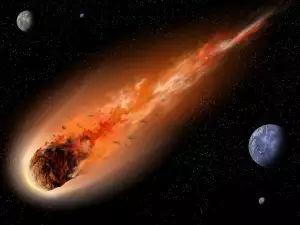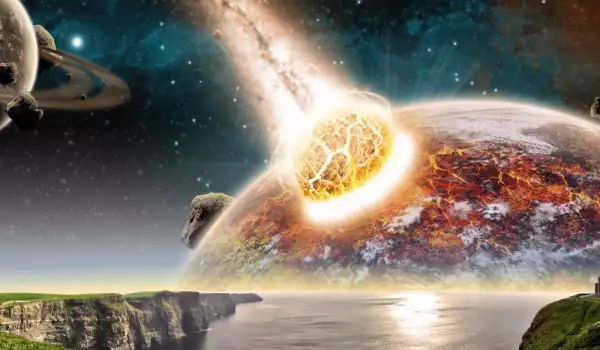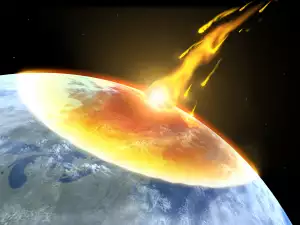The recorded history of asteroids began in the 18th century. Even back then it was known that the distances between the planets and the sun follow the Titius–Bode law.
If we take this law into consideration, there there must be another planet between the orbits of Mars and Jupiter. Uranus, the 7th planet, discovered in 1781, also follows this rule. This gave rise to the belief in a planet existing between Mars and Jupiter.
On January 1, 1801, an object was seen moving through the sky, whose orbit was a semi-major axis. Such an axis could only belong to an unknown planet. Very recently it became clear that the newly discovered planet had very small dimensions - and that it was not the only one.
Some other miniature planets with similar orbits could be seen in the sky. Many such tiny planets orbited between Mars and Jupiter. There were called asteroids.
Asteroids are bodies having dimensions between a few miles to a few hundred miles. The first asteroid ever discovered and the largest to this day, was named Ceres. It has a diameter of about 600 miles.
Today, we know the orbits of about 4000 asteroids. Their total number probably exceeds a few million.
Here are the most famous asteroids after Ceres.
87 Sylvia. It has a diameter of 162 miles. It was discovered on May 16, 1866 and is actually a system of 3 asteroids.

243 Ida. It has dimensions of 35 x 15 x 13 miles. It was discovered on September 29, 1884 and was visited by the Galileo space probe.
The next asteroid is the mood of 243 Ida - I Dactyl. It has a diameter of 0.9 miles and was discovered much later on August 28, 1993.
253 Mathilde has dimensions of 41 x 30 x 29 miles and was discovered on November 12, 1885. It was visited by the NEAR Shoemaker robotic space probe.
433 Eros has dimensions of 8 x 8 x 21 miles. The asteroid was identified on August 13, 1989 and had the NEAR Shoemaker probe fly by it also.
624 Hektor has a diameter of 65 miles. It was found on February 10, 1907 and is the largest Jupiter trojan.
4769 Castalia. First seen on August 9, 1989, it has dimensions of 1 x 0.5 miles. This was the first asteroid to be modeled by radar imaging.
5261 Eureka was discovered on June 20, 1990. It belongs to the trojan asteroids.
3753 Cruithne is only 3 miles wide. It was first identified October 10, 1986. The asteroid has attracted much attention because it orbits around the sun in the same way that Earth does.
4179 Toutatis has dimensions of 2.8 x 1.5 x 1.2 miles. It was first noticed in January 4, 1989, while in 2004 it passed near the Earth.
951 Gaspra is 12 x 7.5 x 6.8 miles in size. It was found on July 30, 1916 and had the Galileo space probe pass by it.
2060 Chiron as a diameter of 124 miles. The object was first seen on October 18, 1977 and was one of the first Centaur bodies.









